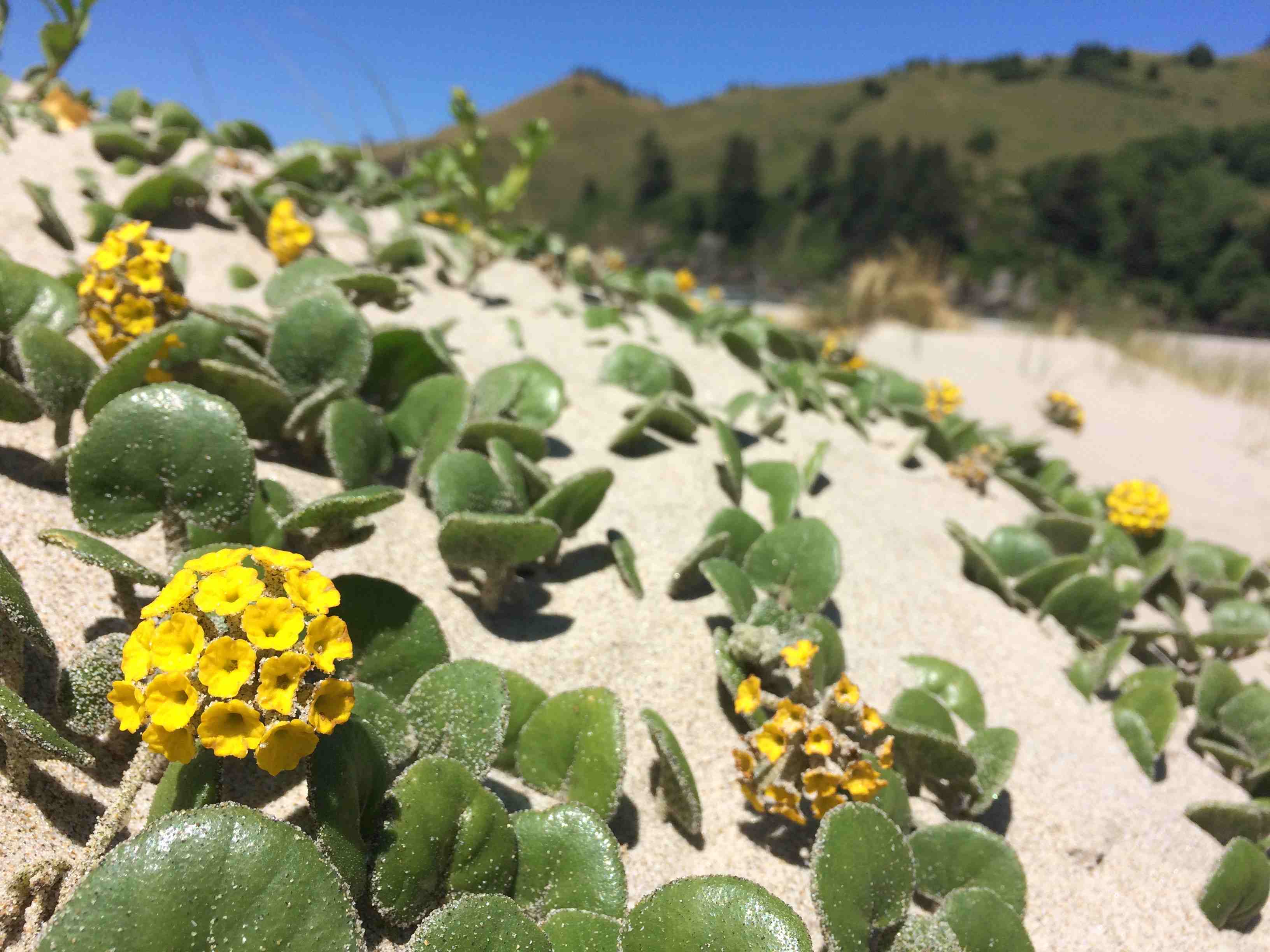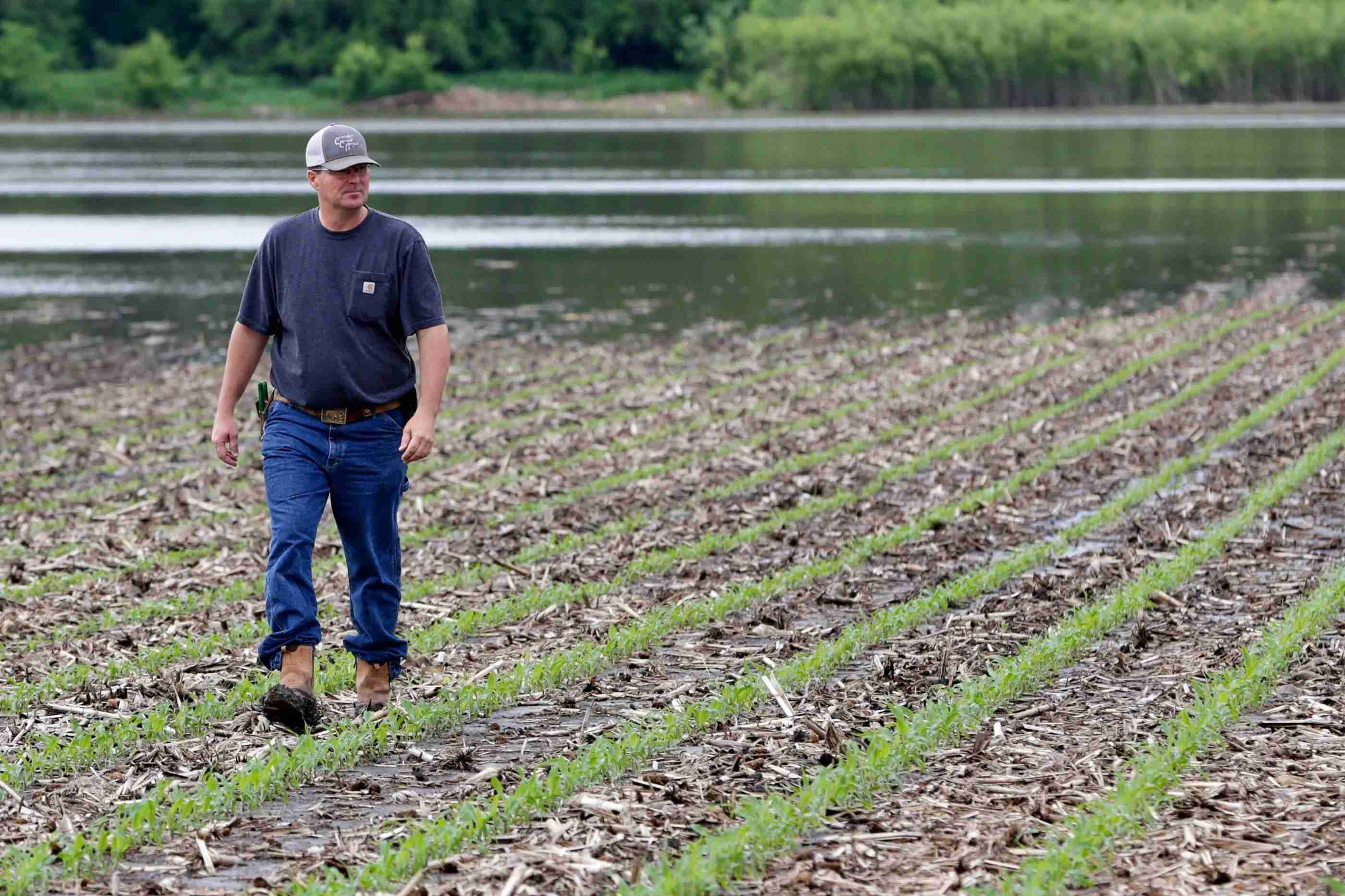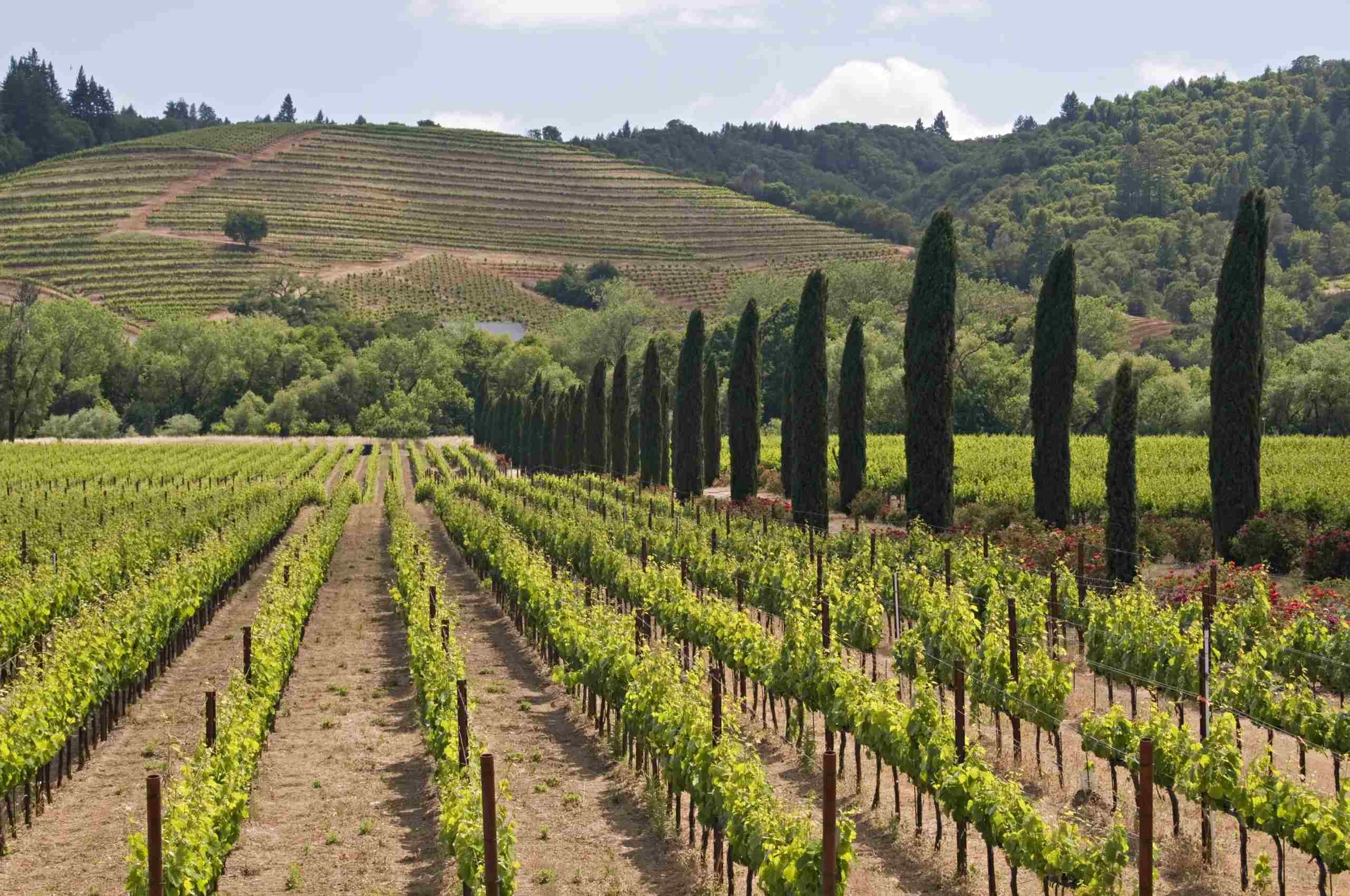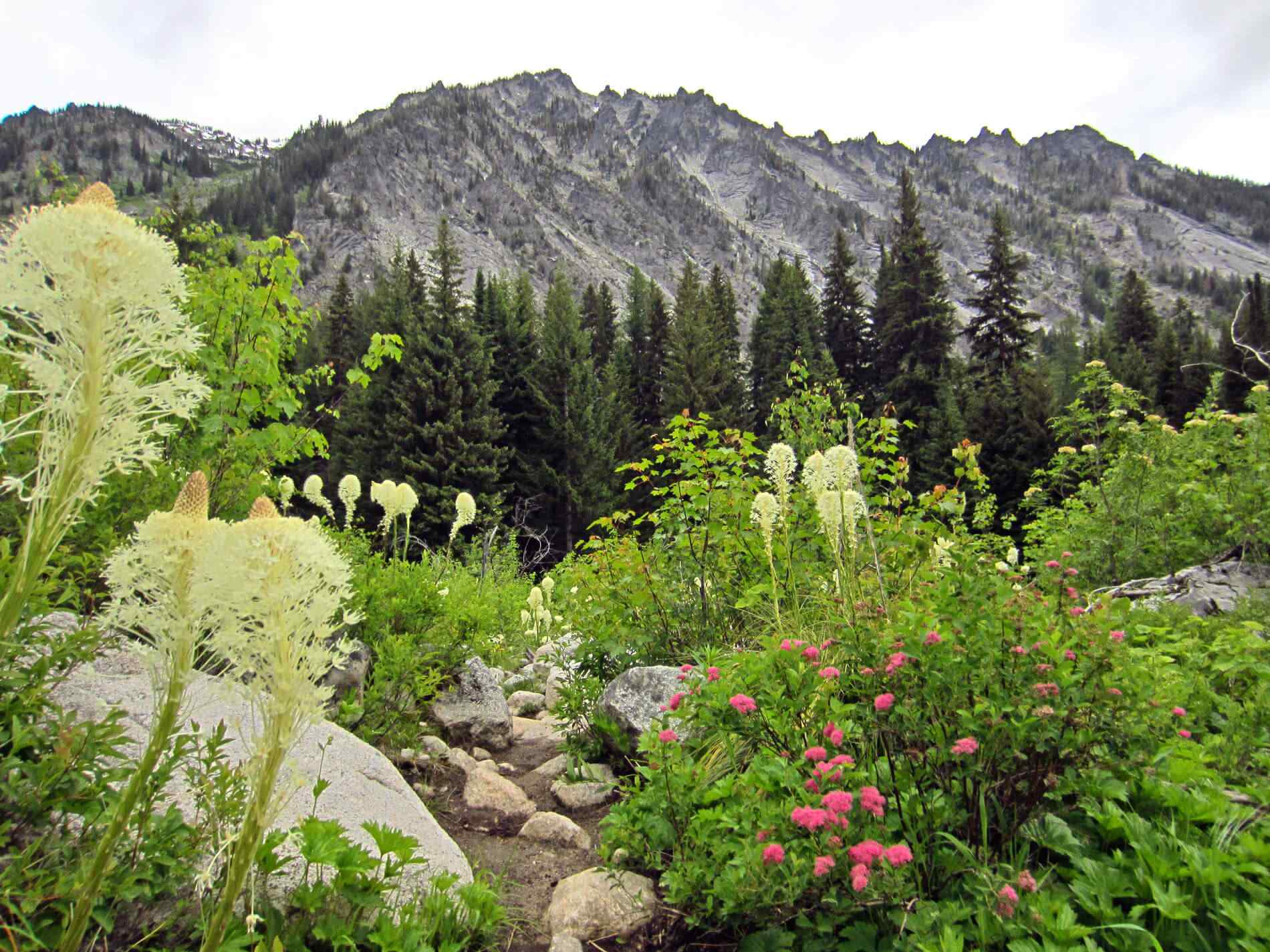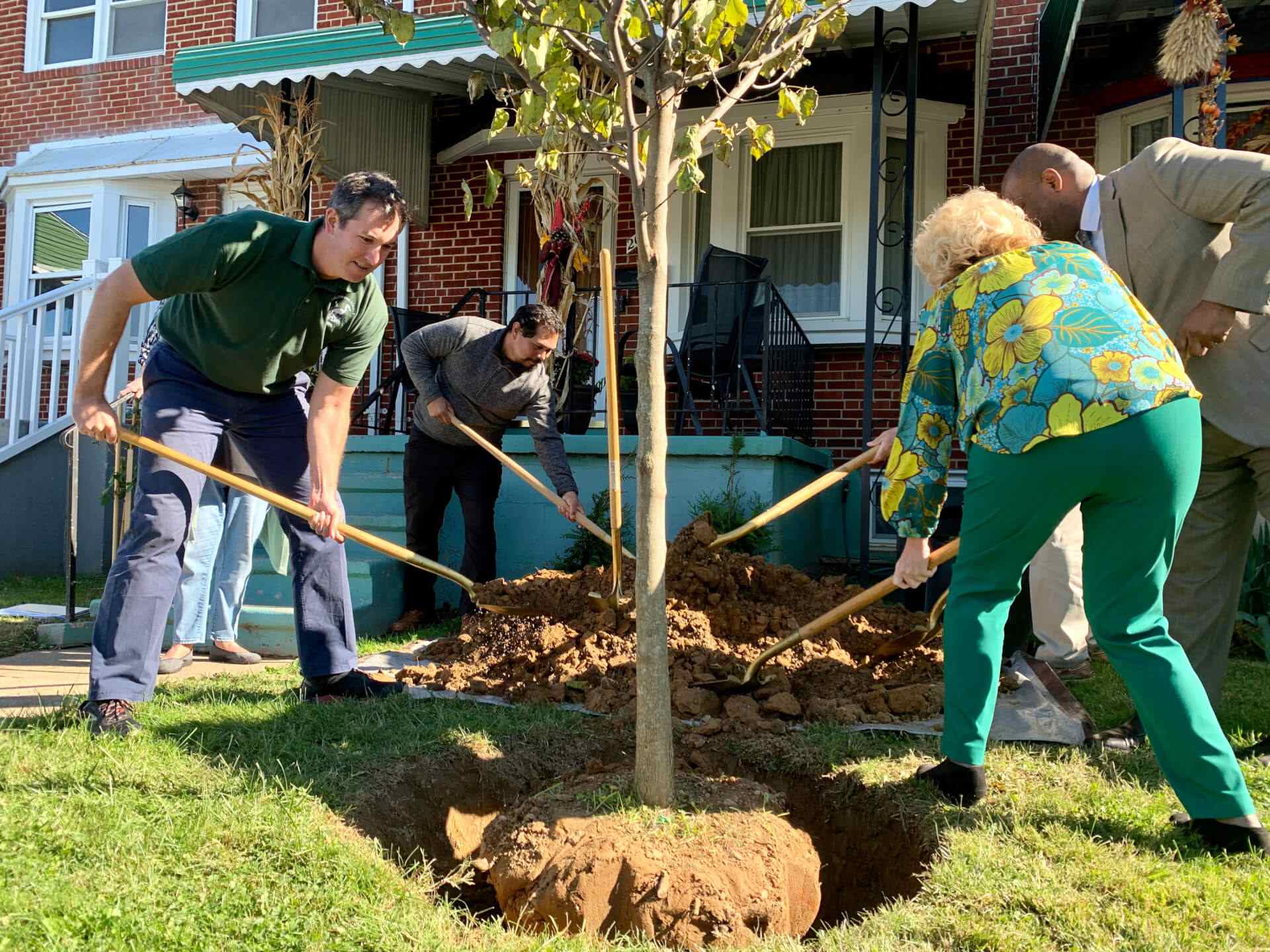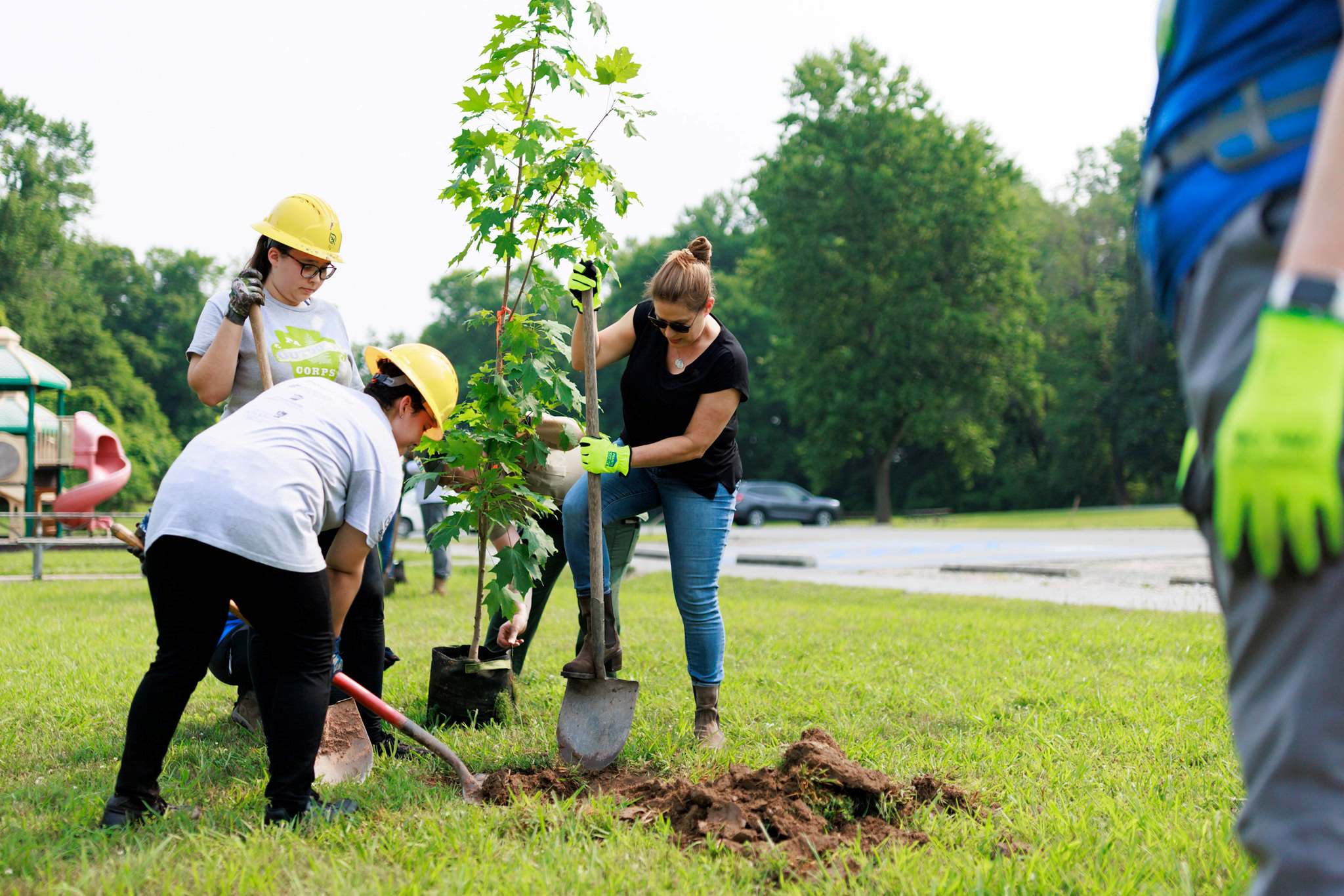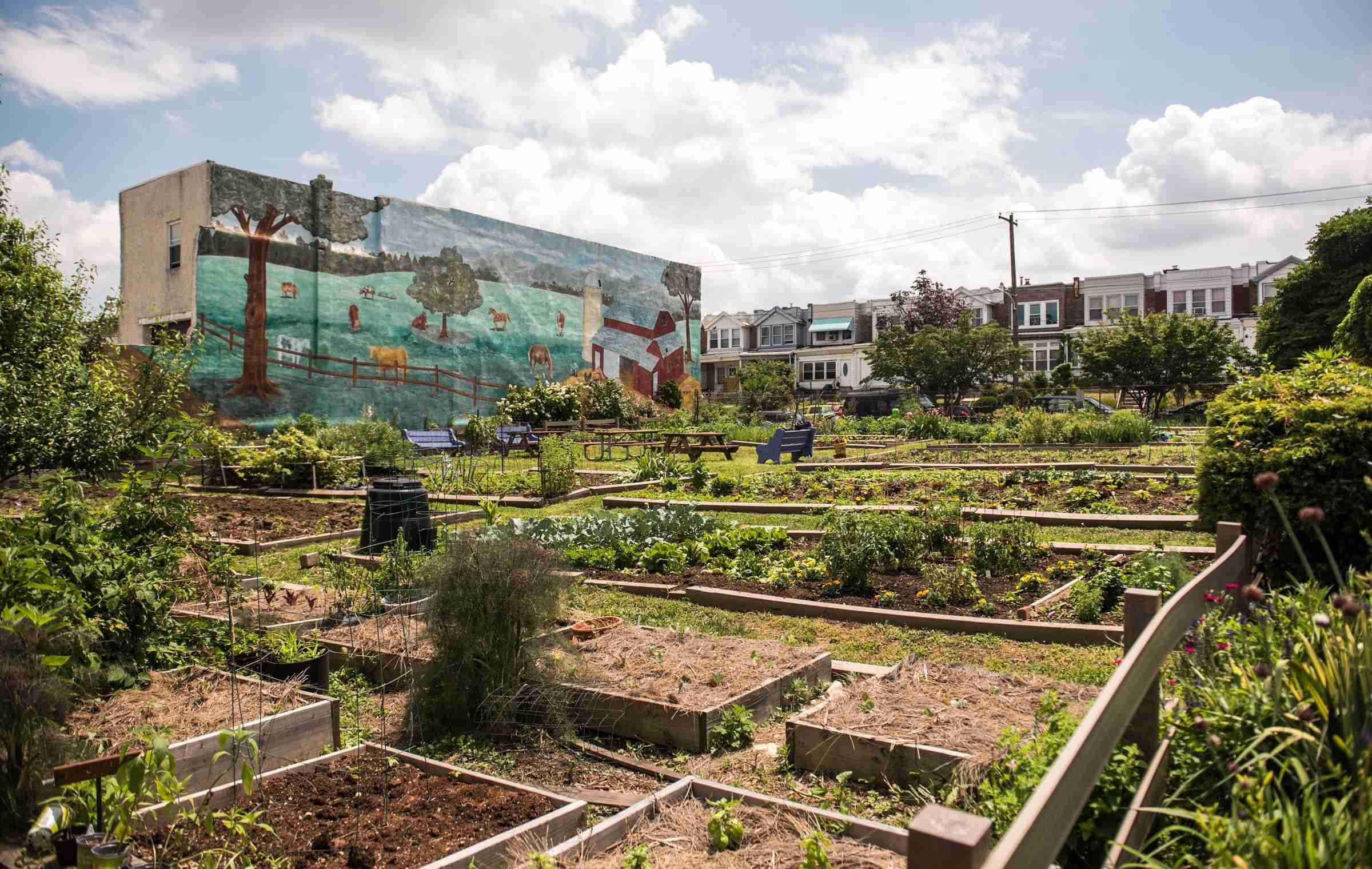Home>Gardening Basics>Understanding Soil>What Planting Zone Is Georgia In
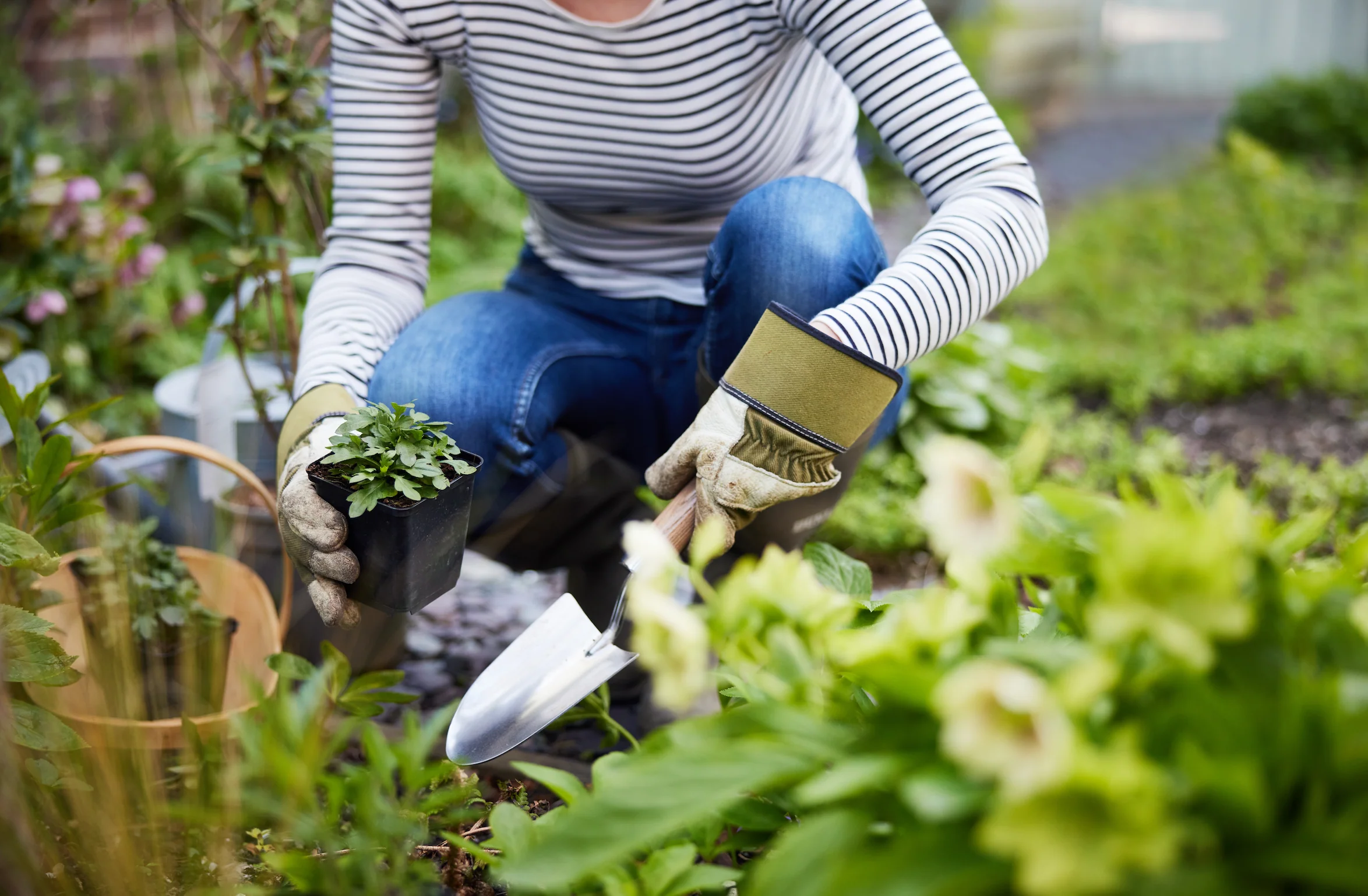

Understanding Soil
What Planting Zone Is Georgia In
Modified: January 22, 2024
Discover the planting zone for Georgia and learn how understanding soil conditions can help you successfully grow your garden.
(Many of the links in this article redirect to a specific reviewed product. Your purchase of these products through affiliate links helps to generate commission for Chicagolandgardening.com, at no extra cost. Learn more)
Table of Contents
Introduction
Welcome to the fascinating world of gardening and, more specifically, to the realm of understanding planting zones. Whether you are an experienced gardener or just starting out on your green journey, knowing your planting zone is essential for successful gardening. In this article, we will explore the concept of planting zones and delve into the specific planting zone of the beautiful state of Georgia.
Gardening is not just a hobby; it is a way of connecting with nature and nurturing the earth. Understanding the unique climate and environmental conditions of your region is crucial when it comes to selecting the right plants for your garden. Planting zones help gardeners determine which plants are most likely to thrive in their specific area.
Each region has its own climate characteristics, such as average temperatures and frost dates, which directly impact the types of plants that can grow successfully there. Planting zones divide the world into distinct regions based on these climatic factors, allowing gardeners to make informed decisions about what to plant and when to plant it.
Now, let’s turn our attention to the state of Georgia. Known for its rich history, scenic landscapes, and diverse flora, Georgia is a haven for garden enthusiasts. Whether you live in the vibrant city of Atlanta, the coastal towns of Savannah and Brunswick, or the charming small towns in the countryside, Georgia offers a wealth of gardening opportunities.
Georgia’s geographic location in the southeastern United States gives it a unique climate. With a blend of subtropical and temperate influences, Georgia experiences mild winters and hot, humid summers. These climatic conditions greatly influence the selection of appropriate plants for the state’s gardens.
So, what is Georgia’s specific planting zone? That’s what we’ll explore in the next section as we dive into the factors that determine Georgia’s planting zone and the popular plants that thrive in this region. Whether you’re a seasoned gardener in Georgia or just starting out, this article will provide you with valuable insights to maximize your gardening success in the Peach State.
Understanding Planting Zones
Before we delve into Georgia’s specific planting zone, let’s first gain a better understanding of what planting zones are and why they matter. Planting zones, also known as hardiness zones, are geographic areas that are categorized based on their average annual extreme minimum temperature. These zones help gardeners determine which plants will thrive in their specific area.
The United States is divided into 13 different planting zones, ranging from Zone 1, which experiences the coldest temperatures, to Zone 13, which features the warmest temperatures. Each zone is further divided into “a” and “b” subzones, with “a” being the zone with colder temperatures and “b” having slightly warmer temperatures.
Knowing your planting zone is essential because it allows you to select plants that are well-suited to the temperature range in your area. Different plants have specific temperature requirements for optimal growth, and planting within your zone helps increase the chances of success.
It’s important to note that planting zones are not the only factor to consider when selecting plants. Other environmental factors, such as soil type, sunlight requirements, and moisture levels, also play a crucial role in plant growth. However, planting zones provide a starting point for narrowing down your plant choices and ensuring they have a higher chance of thriving in your garden.
The USDA (United States Department of Agriculture) developed and maintains the most widely used planting zone system in the United States. This system takes into account data from weather stations across the country to determine the average extreme minimum temperature for each zone. While no system is perfect, the USDA planting zone map serves as a helpful guideline for gardeners across the country.
Now that we have a better understanding of planting zones, let’s focus specifically on Georgia’s unique climate and the factors that determine its planting zone. By understanding these factors, you will be better equipped to make informed decisions about plant selection and maximize your gardening success in Georgia.
Georgia’s Climate
Georgia, located in the southeastern part of the United States, experiences a diverse and unique climate that sets it apart from other regions. The state’s climate is influenced by both subtropical and temperate factors, resulting in a pleasant mix of mild winters and hot, humid summers.
Georgia falls within the USDA Hardiness Zones 6a to 9a, covering a wide range of temperature and climatic conditions. The northern part of the state, including areas like the Blue Ridge Mountains, tends to have cooler temperatures and falls within the lower end of the hardiness scale. On the other hand, the southern coastal areas, such as Savannah and Brunswick, feature warmer temperatures and fall within the higher end of the scale.
One of the defining characteristics of Georgia’s climate is its relatively mild winters. While the state does experience some colder temperatures, especially in the northern regions, the overall winter climate is relatively moderate. This allows for a longer growing season compared to many other states, providing gardeners with ample opportunities to grow a wide variety of crops and plants.
In contrast, summers in Georgia can be hot and humid. The state experiences high levels of humidity, particularly along the coastal regions. The combination of heat and humidity can create challenging conditions for plants that are not suited to such climates. However, with careful plant selection and proper gardening techniques, it’s possible to cultivate a successful garden even during the hot summer months.
Precipitation patterns also play a significant role in Georgia’s climate. The state receives a relatively high level of rainfall throughout the year, with some variations between regions. The mountainous areas in the north tend to receive more rainfall, while the coastal areas may experience more sporadic rainfall patterns.
Understanding Georgia’s unique climate is crucial when it comes to selecting the right plants for your garden. The range of zones across the state and the fluctuating temperatures throughout the year mean that different plants will thrive in different parts of Georgia. It’s important to consider the specific climate characteristics of your particular location when planning your garden.
Now that we have an overview of Georgia’s climate, let’s explore the specific planting zone that corresponds to this diverse and dynamic region.
Georgia’s Planting Zone
Based on the USDA Hardiness Zone Map, Georgia is divided into different planting zones that help gardeners determine the suitability of various plants for their region. The planting zones in Georgia range from Zone 6a in the north to Zone 9a in the south. Understanding the specific planting zone of your area in Georgia is key to selecting the right plants that will thrive in your garden.
In the northern part of Georgia, including cities like Atlanta and Athens, Zone 6a prevails. This means that the average extreme minimum temperature in this zone falls between -10°F to -5°F (-23.3°C to -20.6°C). Gardeners in this zone should select plants that can withstand cold winters and occasional frost. Examples of plants suitable for Zone 6a include blueberry bushes, Japanese maples, and winter vegetables like broccoli and kale.
Moving down to central Georgia, including cities like Macon and Augusta, you will find Zone 7a. This zone experiences slightly milder winters compared to Zone 6a, with average extreme minimum temperatures ranging from 0°F to 5°F (-17.8°C to -15°C). Gardeners in this zone can enjoy a longer growing season and have more options when it comes to plant selection. Popular plants for Zone 7a include tomatoes, peppers, sunflowers, and roses.
As we head closer to the southern coastal areas of Georgia, we enter Zone 8a. Cities like Savannah and Brunswick fall within this zone, where the average extreme minimum temperatures range from 10°F to 15°F (-12.2°C to -9.4°C). In Zone 8a, gardeners can enjoy a longer growing season and have an even wider range of plants to choose from. Some popular choices for this zone include citrus trees, palm trees, azaleas, and gardenias.
Finally, in the extreme southern part of Georgia, near the state’s border with Florida, you will find Zone 9a. This zone boasts the mildest winters in the state, with average extreme minimum temperatures ranging from 20°F to 25°F (-6.7°C to -3.9°C). Gardeners in Zone 9a can grow a wide range of tropical and subtropical plants that require warm temperatures year-round. Examples include bananas, hibiscus, bougainvillea, and various types of palms.
It’s important to keep in mind that Georgia’s planting zones are not set in stone and can vary slightly due to microclimates and localized conditions. Other factors, such as elevation, proximity to large bodies of water, and urban heat effect, may also influence the specific climate of your gardening location. Consulting with local gardening resources or experienced gardeners in your area can provide helpful insights tailored to your specific microclimate.
By understanding your specific planting zone in Georgia, you can make informed decisions about plant selection and create a thriving garden that can withstand the unique climatic conditions of the state.
Factors Affecting Georgia’s Planting Zone
Several factors play a role in determining Georgia’s planting zone, which influences the types of plants that will thrive in the state. Understanding these factors will help you make informed decisions about what to plant in your garden. Let’s delve into the key factors that affect Georgia’s planting zone.
1. Temperature Range: The USDA Hardiness Zone Map is primarily based on the average extreme minimum temperature. This key factor determines the zone in which a specific region falls. Georgia’s planting zones range from Zone 6a in the north to Zone 9a in the southernmost regions. These zones reflect the temperature extremes that plants can tolerate in different parts of the state.
2. Frost Dates: Frost dates provide valuable information for gardeners, especially in areas with milder winters like Georgia. The first and last frost dates in your region will influence the timing of planting and harvesting. Understanding the length of your frost-free growing season is vital for selecting the right plants and maximizing their growth potential.
3. Elevation: Georgia’s topography ranges from coastal plains to mountains, resulting in varying elevations throughout the state. Higher elevations, such as the Blue Ridge Mountains, tend to have cooler temperatures and fall into the lower end of the planting zones. Lower elevations, particularly in the coastal areas, generally have warmer temperatures and fall into the higher end of the zones.
4. Microclimates: Microclimates are localized climate patterns within a larger region. They can be influenced by factors such as proximity to bodies of water, elevation changes, and urban or rural settings. In Georgia, microclimates can create variations in the local climate, affecting the hardiness of plants in specific areas. For example, urban areas tend to be warmer due to the urban heat island effect.
5. Rainfall and Moisture: The amount and distribution of rainfall can greatly impact plant growth and survival. Georgia receives a relatively high level of rainfall throughout the year, but there may be variations across the state. Coastal areas may experience more sporadic rainfall patterns, while mountainous regions might receive higher amounts of precipitation. Proper irrigation and drainage practices are crucial for ensuring plants receive the appropriate amount of moisture.
6. Soil Composition: Soil composition affects plant health and growth. Georgia’s soils can vary significantly from region to region. Coastal areas often have sandy soils, while inland areas may have clay or loamy soils. Understanding your specific soil type will help you select plants that are well-adapted to the soil conditions in your area and implement appropriate soil amendments if necessary.
Taking these factors into account when planning your garden will help you choose plants that are well-suited to your specific gardening location in Georgia. By considering temperature ranges, frost dates, elevation, microclimates, rainfall patterns, and soil composition, you can create an optimal growing environment for your plants and increase your chances of gardening success.
Popular Plants for Georgia’s Planting Zone
Georgia’s diverse planting zones offer a wide range of gardening possibilities for both experienced and novice gardeners. With the state’s mild winters and hot, humid summers, there are numerous plant options that can thrive in Georgia’s climate. Here are some popular plants that are well-suited to Georgia’s planting zones:
1. Azaleas: Azaleas are beloved for their vibrant blooms and are well-suited to Georgia’s climate. These flowering shrubs thrive in the state’s acidic soils and partial shade. From the enchanting native flame azaleas to beautiful hybrid varieties, azaleas add a burst of color to Georgia gardens.
2. Blueberries: Georgia is known as the “Blueberry Capital of the World,” and for good reason. Blueberries are a popular choice for many Georgia gardeners. These fruit-bearing shrubs are not only delicious but also well-adapted to the acidic soils in the state. With proper care, you can enjoy a bountiful harvest of fresh blueberries.
3. Crepe Myrtles: Crepe myrtles are stunning flowering trees that thrive in Georgia’s warm climate. These trees offer beautiful clusters of flowers in a variety of colors, from bright pinks to deep purples. Crepe myrtles are relatively low-maintenance and provide a stunning focal point in any garden.
4. Tomatoes: Tomatoes are a staple in many Georgia gardens. With the longer growing season in the state, gardeners have ample time to grow a variety of tomato cultivars. From juicy heirloom varieties to cherry tomatoes, Georgia gardeners can enjoy an abundance of homegrown tomatoes.
5. Palms: In the southernmost parts of Georgia, where Zone 9a prevails, tropical and subtropical plants thrive. Palms, such as the Mediterranean fan palm and the windmill palm, are popular choices for adding a touch of the tropics to Georgia gardens. These elegant trees create a striking visual impact and bring a sense of coastal charm.
6. Roses: Roses are classic and timeless flowers that can be grown throughout Georgia. With proper care and attention, roses can thrive in a variety of planting zones. From hybrid tea roses to climbing roses, these beauties add elegance and fragrance to any garden.
7. Herbs: Growing herbs is a favorite among Georgia gardeners. Herbs like basil, rosemary, thyme, and oregano can be grown in containers or in the ground. They not only add flavor to your culinary creations but also provide attractive foliage and medicinal properties.
8. Perennials: Many perennial plants are well-suited to Georgia’s planting zones. These plants come back year after year, providing continuous beauty to your garden. Popular perennials for Georgia include coneflowers, black-eyed Susans, bee balm, and daylilies.
Remember to consider your specific planting zone within Georgia when selecting plants. Along with the temperature ranges and other factors discussed earlier, these popular plants will thrive and enhance the beauty of your Georgia garden.
Tips for Gardening in Georgia’s Planting Zone
Gardening in Georgia’s planting zone can be a rewarding experience, but it’s important to keep certain tips in mind to ensure successful plant growth. Here are some helpful tips for gardening in Georgia:
1. Know Your Planting Zone: Understanding your specific planting zone is crucial for selecting the right plants that will thrive in your area. Refer to the USDA Hardiness Zone Map to determine which zone you fall into and choose plants accordingly.
2. Consider Native Plants: Native plants are well-adapted to Georgia’s climate and have a higher chance of thriving in the local conditions. Incorporate a variety of native plants into your garden to support the local ecosystem and attract local wildlife.
3. Watering: Georgia’s hot and humid summers often require regular watering for the plants to stay hydrated. Water deeply but infrequently to encourage deep root growth. Consider using drip irrigation or soaker hoses to deliver water directly to the plant’s root zone and minimize water waste.
4. Mulching: Applying a layer of organic mulch around your plants helps retain moisture, control weeds, and regulate soil temperature. Use pine straw, wood chips, or shredded leaves as mulching materials. Avoid piling mulch directly against the plant stem to prevent rot.
5. Soil Improvement: Georgia soils can vary in composition depending on the region. Conduct a soil test to determine your soil’s pH and nutrient levels. Amend the soil as needed to create the ideal growing conditions for your plants. Adding organic matter, such as compost, can improve soil structure and fertility.
6. Pest and Disease Management: Georgia’s warm and humid climate can create favorable conditions for pests and diseases. Regularly inspect your plants for any signs of pests or diseases and take appropriate measures, such as using organic pest control methods or seeking advice from local experts.
7. Planting Timing: In Georgia, the longer growing season allows for multiple planting cycles. Take advantage of this by staggering your plantings throughout the season to maximize your harvest and enjoy a continuous supply of fresh produce and blooming flowers.
8. Shade and Sun Protection: Some plants thrive in full sun, while others prefer partial shade. Consider the sun exposure in your garden and group plants according to their light requirements. Use trellises, shade cloth, or patio umbrellas to provide shade for plants that need protection from intense afternoon sun.
9. Pruning and Maintenance: Regularly prune your plants to maintain their shape, promote healthy growth, and control diseases. Remove dead or damaged branches and spent flowers to encourage new growth. Stay vigilant and promptly remove weeds to prevent them from competing with your plants for nutrients and water.
10. Stay Educated: Gardening is a continuous learning process. Stay updated on local gardening resources, attend workshops or webinars, and connect with fellow gardeners in Georgia. Sharing knowledge and experiences can greatly enhance your gardening journey.
By following these tips and adapting them to your specific gardening needs, you can create a thriving and beautiful garden in Georgia’s planting zone. Gardening is a wonderful way to connect with nature, enjoy the outdoors, and create a sanctuary in your own backyard.
Conclusion
Understanding Georgia’s planting zone is fundamental to successful gardening in the state. With its diverse climate and range of planting zones, Georgia offers a wealth of opportunities for gardeners to cultivate a wide variety of plants. Whether you reside in the cooler northern regions or the warmer coastal areas, selecting plants that are well-suited to your specific zone is key to a thriving garden.
By considering factors such as temperature ranges, frost dates, elevation, microclimates, rainfall patterns, and soil composition, you can make informed decisions about plant selection and create an optimal environment for your plants to flourish.
Popular plants for Georgia’s planting zone include azaleas, blueberries, crepe myrtles, tomatoes, palms, roses, herbs, and perennials, each offering unique beauty and benefits to your garden. Incorporating these plants, as well as native species, can enhance the sustainability and ecological balance of your landscape.
Implementing best practices such as proper watering, mulching, soil improvement, pest management, and pruning will help you maintain healthy and vibrant plants throughout the growing season. Staggering plantings and considering shade and sun protection will ensure a continuous harvest and a visually appealing garden.
Remember, gardening is a continuous learning journey. Stay connected with local resources and fellow gardeners to learn from their experiences and adapt your gardening practices accordingly. Embrace the joy of growing your own food and creating a beautiful oasis that brings nature’s beauty closer to your home.
So, whether you are an experienced gardener or just starting out on your gardening adventure, dive into the enchanting world of gardening in Georgia’s planting zone. Allow your green thumb to flourish and experience the satisfaction of nurturing and witnessing the beauty of nature unfold right in your own backyard.
